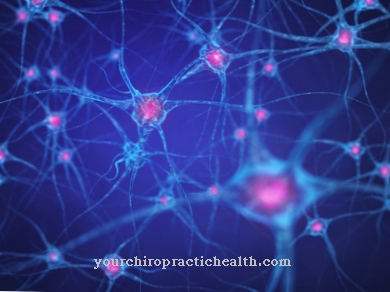The macrobiotic way of life should not only make the body healthier, but also strengthen the mental abilities. The original form, as practiced and taught by its founder, was considered too one-sided a short time after its introduction and was expanded due to a few bad occurrences and supplemented with western foods.
What is macrobiotic?

The term Macrobiotics comes from ancient Greece. At the time of the famous doctor Hippocrates, people who reached old age and were still healthy were considered macrobiotics. Today's macrobiotics is a nutritional theory that was founded by the Japanese Georges Ohsawa.
It is designed to make the people who practice this way of life so healthy that they will have long healthy lives. The founder's claim to be able to cure all illnesses with it is now considered outdated. Macrobiotics are in the tradition of Taoism and the Asian diet. It goes back to the basic ideas of the Japanese military doctor Sagen Ishizuka. In his view of a healthy lifestyle, people should follow the traditional Japanese diet with its unprocessed foods and should not consume any animal foods.
Only the restoration of the balance between Yin and Yang can restore the sick body to health. Ishizuka himself is said to have contracted tuberculosis at the age of 16 and healed himself with the macrobiotic way of life. It is typical of this type of diet that only whole, pure foods from the region are used. In addition, the user should chew all food slowly in order to notice the feeling of fullness earlier.
Function, effect & goals
The aim of the macrobiotic way of life is to lead a long, healthy life by balancing the principles of yin and yang. In addition, the user should achieve a more refined perception, greater openness and flexibility.
The main food in this diet is untreated whole grains. In addition, legumes, vegetables from the region and according to the season, soy products (tofu), sauerkraut and sea vegetables such as algae are consumed. The user is allowed to consume vegetable oils, seeds, nuts, sea salt, fruit, salads and from time to time some animal protein (white fish). Meat and dairy products as well as nightshades are not allowed. The latter contain too many alkaloids. In addition, all luxury foods, sugar and tropical fruits are frowned upon. They are of Yin quality and can increase the susceptibility to infections.
A balanced macrobiotic meal contains all 5 elements bitter, sweet, hot, salty and sour. Each of the flavors is represented by certain foods that promote the health of certain organs. Bitter foods (wild herbs and green vegetables), for example, strengthen the heart and small intestine. Most of the macrobiotic meal is made up of complex carbohydrates like cooked whole grains. With it, the blood sugar level builds up only slowly and also decreases again in the same way. The macrobiotic has a feeling of satiety without feeling too heavy at the same time. The vegetable protein contained in vegetables, tofu and legumes promotes muscle health.
Vegetables should not be peeled and cooked in oil or water in as large pieces as possible. Most of the minerals come from sea vegetables and unrefined sea salt, so the acids and bases are in balance. Macrobiotics get the necessary lactic acid bacteria from the consumption of tempeh, miso and tamari (condiments). The thermal effect of macrobiotic dishes is determined by how they are prepared. Raw foods have cooling properties. Steaming, searing, etc. heat the food to different degrees. The macrobiotic person determines the type, composition and preparation of his meals according to the weather, his state of health, his age, the requirements of his work, etc.
All macrobiotic foods should only be cooked or fried using wood, enamel, glass, and stainless steel cookware. Food supplements and the use of the microwave are also taboo. For macrobiotics, brown rice is the optimal food: With it, the ratio between yin and yang is 5: 1 (corresponding to the ratio of potassium to sodium in brown rice). The macrobiotic way of life achieved good results in scientific studies with regard to the prevention of cancer. Women who ate a lot of soy products as part of their macrobiotic diet had lower levels of estradiol in their blood than women who ate traditional diets.
A high level of estradiol is believed to increase the risk of breast cancer. Many prominent representatives of nutritional science had previously had type 2 diabetes, cancer, fibromyalgia or chronic fatigue, which they could effectively eliminate with a macrobiotic diet.
Risks, side effects & dangers
If the practitioner of the macrobiotic way of life adheres too strictly to the original rules, deficiency symptoms can occur when he uses the Western foods for it. In the early days of macrobiotics, the "pure" nutrition theory, as it was spread by its founder Ohsawa, led to some serious events (deaths), whereupon the USA banned this form of nutrition.
Even the much more moderate version according to Kushi should definitely only be used after carefully combining the food. Children, pregnant and breastfeeding women are particularly at risk of not receiving enough calcium, iron, vitamins B12 and D. Various studies have shown that children who were fed macrobiotically during their first and second year of life had particularly pronounced growth disorders (rickets). If used improperly, macrobiotics can also lead to protein deficiency.













.jpg)

.jpg)
.jpg)











.jpg)